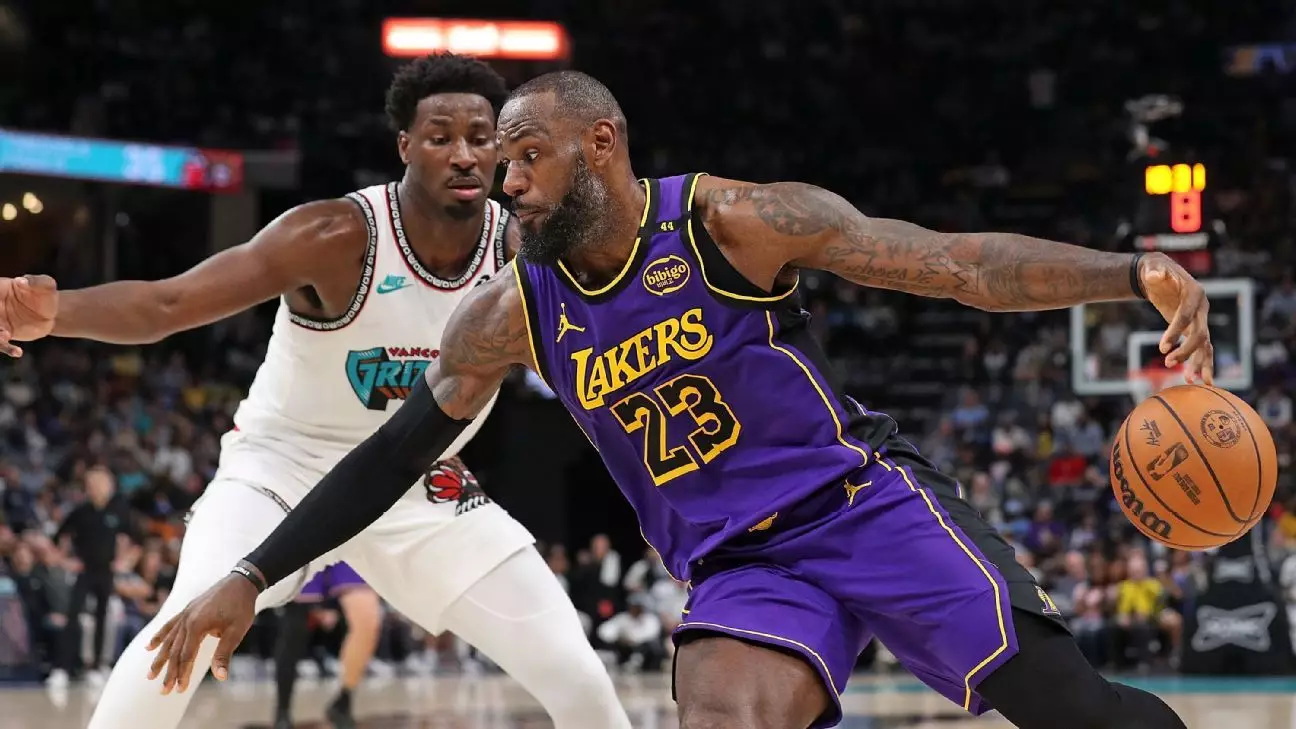The hustle and bustle of the NBA season can create captivating narratives, and the Memphis Grizzlies’ latest victory against the Los Angeles Lakers presented just such a tale. The Grizzlies surged to a commendable 131-114 win, fueled not only by their established stars but also by the resilience of newer talent stepping into crucial roles. One of the standout moments, a testament to the camaraderie within the team, occurred when Desmond Bane interrupted the post-game interview of teammate Scotty Pippen Jr. to commend him for a pivotal defensive play against veteran LeBron James. Bane’s enthusiastic remark about Pippen’s “snatching” ability underscored the excitement within the Grizzlies’ locker room, contrasting sharply with the atmosphere in the Lakers’ post-game setting.
On the flip side, the Lakers faced an array of mounting challenges, which were laid bare during their defeat. While LeBron James dazzled with an impressive 39-point performance—shooting 15-for-24—his efforts alone could not salvage a struggling team. The absence of key players, Anthony Davis and Rui Hachimura, cast a long shadow over the Lakers’ strategy and execution. Head coach JJ Redick, now in his first year, confronted the harsh reality of the situation, using James’s efforts as a barometer for what the rest of the team needed to emulate. Redick’s comments highlighted not only James’s individual brilliance but also the concerning lack of collective effort displayed by his teammates.
Addressing the Lack of Effort
The conversation surrounding the Lakers’ effort went beyond mere statistics. Redick, as a fresh voice in the coaching staff, tackled issues of competition and accountability head-on. In a striking move, he limited the playing time of D’Angelo Russell, who could only muster a mere six minutes in the second half and finished with a disappointing 12 points. While this was not framed as a punishment, it served as a clear message to the entire roster about the need for sustained effort and focus. Redick’s decision signified a shift in approach and raised questions about the adequacy of the Lakers’ performance under such circumstances.
The Lakers have experienced a worrying decline in defensive efficiency, now ranking 28th in the league. With an average of 118.8 points surrendered per 100 possessions, the team is acting more like a sieve than a stalwart defense. In their match against the Grizzlies, it was evident that defensive lapses allowed the opposition to exploit weaknesses in transition and control the paint effectively. James himself encapsulated the team’s predicament, stating, “We gave up 50% shooting,” which is alarming for a team aspiring to contend for championships. The emphasis on improving defensive stats has become imperative if the Lakers hope to turn their season around.
Meanwhile, the Grizzlies showcased a blend of ingenuity and vitality that paved the way for their success. With players like Scotty Pippen Jr. stepping up significant roles in critical moments, the team displayed a healthy blend of established talent and emerging stars. Their ability to capitalize on the collective weaknesses of their opponents shows not just skill but also the team’s mindset. As they continue to build momentum, every player’s commitment, especially from the newer members, will be integral to navigating the trials of an extended season.
As both teams move forward, critical questions linger. For the Lakers, how can they reclaim their defensive tenacity, particularly in the absence of key players? And, in light of their current standing at 4-4, what adjustments can Redick implement to rejuvenate his squad? On the other hand, for the Grizzlies, can they maintain their momentum and consistent performance as they continue to integrate players into their robust game plan?
This game showcased the dichotomy of two teams at different crossroads, with one steeling itself for a deep playoff run and the other grappling with issues that require urgent attention. As the sands of the NBA season continue to shift, both teams must adapt or risk losing ground in a competitive landscape.

